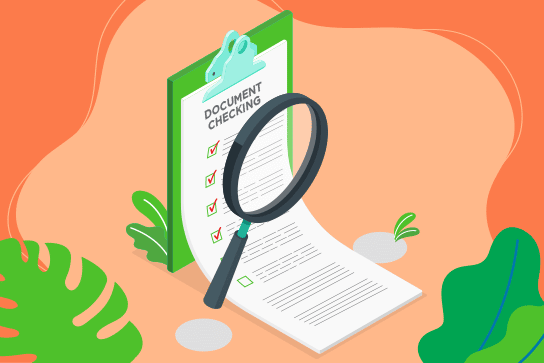LISTEN AUDIO
Last Updated on April 15, 2023 by Ozlinks Education
Subject: Produce cakes, pastries and breads
This unit SITHCCC019* describes the performance outcomes, skills and knowledge required to produce cakes, pastries and breads in a commercial kitchen following standard recipes. It requires the ability to select, prepare and portion ingredients; and to use relevant equipment a range of cookery methods to make and decorate cakes, pastries and breads, and food storage methods.
It does not cover the specialist skills used by patissiers to produce specialist patisserie products. These are covered in the range of patisserie units coded ‘PAT’.
The unit applies to hospitality and catering organisations that produce and serve cakes, pastries and breads, including hotels, restaurants and patisseries.
It applies to individuals who work under the guidance of more senior chefs. They demonstrate autonomy and judgement to complete routine activities and take limited responsibility in known and stable contexts within established parameters.
Elements and Performance Criteria.
Elements describe the essential outcomes. Performance criteria describe the performance needed to demonstrate achievement of the element.
1. Select ingredients.
1.1 Confirm food production requirements from food preparation list and standard recipes.
1.2 Calculate ingredient amounts according to requirements.
1.3 Identify and select ingredients from stores according to recipe, quality, freshness and stock rotation requirements.
2. Select, prepare and use equipment.
2.1 Select type and size of equipment suitable to requirements.
2.2 Safely assemble and ensure cleanliness of equipment before use.
2.3 Use equipment safely and hygienically according to manufacturer instructions.
3. Portion and prepare ingredients.
3.1 Sort and assemble ingredients according to food production sequencing.
3.2 Weigh and measure wet and dry ingredients according to the recipe and quantity of cakes, pastries and breads required.
3.3 Prepare yeast-based dough to correct consistency and shape, according to standard recipes.
3.4 Minimise waste to maximise profitability of cakes, pastries and breads produced.
4. Cook cakes, pastries, breads.
4.1 Use cookery methods for cakes, pastries and breads and sweet and savoury fillings to achieve desired product characteristics.
4.2 Follow standard recipes and make food quality adjustments within scope of responsibility.
4.3 Select baking conditions, required oven temperature and bake cakes, pastries and breads.
4.4 Cool in appropriate conditions to retain optimum freshness and product characteristics.
5. Decorate, present and store cakes pastries and breads.
5.1 Enhance appearance and taste of cakes, pastries and breads using suitable fillings, icings and decorations, according to standard recipes.
5.2 Apply icing to ensure a smooth and seamless finish.
5.3 Visually evaluate cakes, pastries and breads and adjust presentation before displaying.
5.4 Use suitable service-ware to attractively present cakes, pastries and breads according to organisational standards.
5.5 Display cakes, pastries and breads in appropriate conditions to retain optimum freshness and product characteristics.
5.6 Store cakes, pastries and breads and reusable by-products in appropriate environmental conditions.
5.7 Clean work area, and dispose of or store surplus and re-usable by-products according to organisational procedures, environmental considerations, and cost-reduction initiatives.
Assessment Requirements.
Performance Evidence.
Evidence of the ability to complete tasks outlined in elements and performance criteria of this unit in the context of the job role, and:
- follow standard recipes to produce and decorate four of each of the following:
- cakes from the list in the knowledge evidence
- pastries from the list in the knowledge evidence
- breads from the list in the knowledge evidence
- produce each of the above cakes, pastries and breads of the same type:
- that are consistent in quality, size, shape and appearance
- within commercial time constraints and deadlines
- reflecting required quantities to be produced
- following procedures for portion control and food safety practices when handling and storing food
- responding to special customer requests and dietary requirements.
Knowledge Evidence.
Demonstrated knowledge required to complete the tasks outlined in elements and performance criteria of this unit:
- culinary terms and trade names for:
- ingredients commonly used to produce cakes, pastries and breads
- a variety of classical and contemporary cakes, pastries and breads
- contents of stock date codes and rotation labels
- food safety practices for handling and storing cakes, pastries and breads
- classical and contemporary:
- cakes: basic aerated sponge, cold set cake and mousse cake, friands, fruit cake, Genoise sponge, Madeira cake, meringues, muffins, Swiss roll
- pastries: choux pastry, croissant, Danish pastry, puff pastry, short crust, sweet pastry, strudel
- sweet and savoury breads: baguette, bath or fruit bun, bread rolls, hot cross buns, unleavened breads
- characteristics of a variety of classical and contemporary cakes, pastries and breads:
- appearance
- colour
- consistency
- moisture content
- shape
- taste
- texture
- historical and cultural derivations of a variety of cakes, pastries and breads
- basic aspects of yeast fermentation and dough development processes
- nutritional value of classical and contemporary cakes, pastries and breads
- indicators of freshness and quality of stocked ingredients for cakes, pastries and breads
- cookery methods for cakes, pastries, breads and fillings:
- adding fats and liquids to dry ingredients
- chilling ingredients and work surfaces
- cutting, shaping and moulding
- kneading and handling
- preparing and using fillings
- preparing and using pre-bake finishes and decorations
- resting
- rolling
- selecting and preparing appropriate cake tins and moulds
- stirring and aerating to achieve required consistency and texture
- using required amount of batter according to desired characteristics of finished products
- weighing or measuring and sifting dry ingredients
- whisking, folding, piping and spreading
- main types, culinary characteristics and uses of fillings for cakes, pastries or breads:
- savoury: bacon, cheese, fish, ham, meat, poultry, vegetable
- sweet: chocolate, cream, custard, fresh or crystallised fruit and fruit purées, meringue, whole or crushed nuts.
- main types, culinary characteristics and uses of decorations for cakes, pastries or breads:
- chocolate
- coloured and flavoured sugar
- fresh, preserved or crystallised fruits
- fruit purées
- glazes
- icings
- jellies
- sprinkled icing sugar
- whole or crushed nuts
- appropriate baking temperatures and cooking times for cakes, pastries, breads and fillings
- appropriate environmental conditions for storing cakes, pastries, breads and re-usable by-products of their preparation to:
- ensure food safety
- optimise shelf life
- mise en place requirements for producing cakes, pastries and breads and fillings
- safe operational practices using essential functions and features of equipment used to produce cakes, pastries and breads.




